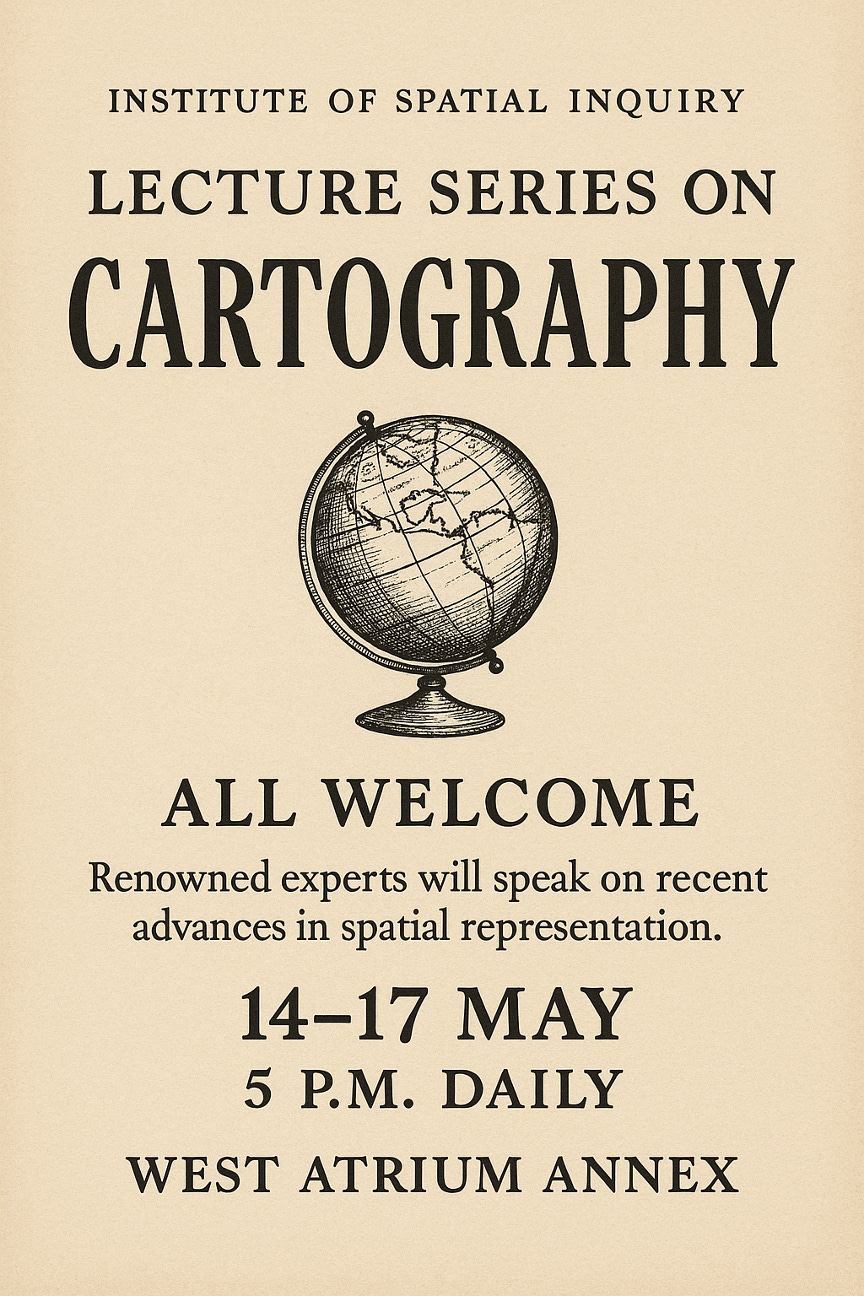Dr. Belinda Arkwright, Chair Emerita of Anomalous Geography, recorded the following seven-part lecture series during the 10th Annual Conference on Recursive Teleology.Next, we have Behavioral Cartography, which is when maps began spying on us. Not officially… yet.
This was the era of spatiotemporal inference engines. Systems that didn’t just ask where you were, but why. Why were you standing there? Why did you pause near the café? Did you forget something. Or most importantly, were you regretting something?
Maps no longer displayed places. They suggested motives, my darlings. Paths began to thicken in areas of collective hesitation. Crosswalks developed predictive pessimism. There was an app that would vibrate gently in your pocket any time you got within twenty meters of a poor life choice. It was wildly popular and then mysteriously discontinued.
Behavioral maps were dynamic, always updating, always observing. For a brief time, they were banned in theaters, confession booths, and most of Northern Finland.
Yes, Tabitha, some of the early models confused 'loitering' with 'existential crisis.' That’s why we don’t let sentiment analysis-based agents drive buses anymore.
In short, this was the moment when we stopped mapping where people went and started mapping what they meant to do. Which, as it turns out, is rarely the same thing.


